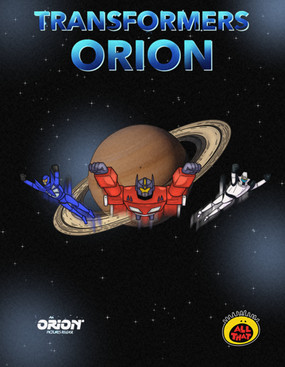HOME | DD
 RevancheRM — Aventeur class Mission Spacecraft (2008)
RevancheRM — Aventeur class Mission Spacecraft (2008)

#starfleet #startrekstarship #deltadynamics
Published: 2021-02-21 16:24:33 +0000 UTC; Views: 3902; Favourites: 18; Downloads: 21
Redirect to original
Description
Image provided by: Adrasil
Original inspiration from: Spaceflight Chronology (Goldstein, Goldstein, Sternbach)
History from: Hobbyist's Guide to the UFP Starfleet, by Timo Saloniemi &
Delta Dynamics
Variant blueprints: Access via Adrasil's Download button
Featured in: Starship Recognition Manual #302
In the post-Eugenics War period and following the loss of production capability of DY series spacecraft, several concerted efforts were made to re-establish and further humanity's presence in the solar system. The first of these, the Aphrodite mission spacecraft series, was first launched in 2001 and saw considerable series construction over the next 14 years. The ships explored all the way inward to land on Venus and outwards to the asteroid belt, serving as the vanguard for critical efforts to bring back needed resources for further space-borne construction.
However, Venus and Mars were not awe-inspiring. Humanity, albeit the enhanced variety, had already set foot on both of those planets and the world's leaders knew that something grand must be announced and launched to encourage hope and growth. The Grand Tour series of missions were planned by the newly established Western Alliance Space Agency (to be operated jointly by NASA and ESA). When possible, aligning planets would dictate the mission, but the ion drives that came from the Eugenics Wars did not require precision routing; all the outer planets could be visited, when properly planned, including the grandest of the dwarfs, Pluto.
The spacecraft designed to do this, the Aventeur series, was the first of the non-DYs to be developed for truly long-term and deep space intrasolar travel. Aventeur I, the Lewis and Clark, was the most inspiring of these missions. Led by Commander Shaun Geoffrey Christopher, the ship would see its crew suspended into deep cryosleep shortly after launch, only to be awakened as they approached Jupiter. After six months of study of the Jovian system, they would return to suspension until they were awakened in the Saturnian system, again to spend six months exploring the rings and moons. The plan called for a 2009 launch, a mid-point arrival at Jupiter in 2014, and then arrival at Saturn in 2020, before finally returning home to Earth in 2039.
With six long-term missions on the roster, a modular design formed the core aspect of the Aventeurs. The proposed idea for the ship was centered around a truss, from which mission-specific equipment and supplies could be attached, giving each of the ships their own unique profile. However, the mission planners for Aventeur I wanted to provide everything, including the kitchen sink and its spare parts, to ensure the crew would be self-sufficient in the face of any adversity. Twelve design-specific cargo pods, referred to as mission modules, were loaded on all forward magnatomic adhesion points, with the astronauts well-trained in pulling from storage and assembling the planet-designated sensors while on final approach, for attachment at the mid-vessel hardpoints. This cargo vessel-as-explorer concept synched so well with all mission goals that the idea was adopted for each of the follow-on ships.
Other notable features with the Aventeur design included a command bridge module that served as an eject-able lifepod, a feature that would be repeated in several other long-range explorers in the coming decades. On the aft, three revolutionary radiator panels employed newly-developed anti-photon field emitters, behind extremely fine water tubules, giving off a deep red glow and providing cooling effects far in excess of what was needed.
The Lewis and Clark mission was an outstanding success, but the news shared with certain scientific circles was figuratively Earth-shaking: evidence of mining—obviously by extraterrestrials—was clearly documented on the Saturnian moons of Dione and Enceladus.
Five more vessels were constructed following the 2009 launch of Lewis and Clark, but one never launched and the Aventeur V mission, the Frémont, was even recalled, once it was obvious that emergent propulsion technology would see later vessels arriving at any planetoid in the system long before she could ever make Neptune.
Would you like to learn more about this class of ship? Download the free Hobbyist's Guide to the UFP Starfleet , a three-volume, 1236-page history of space flight, by Timo Saloniemi.
For an extremely rich gallery of Star Trek starships and vessels from other universes, check out my partner, Adrasil , here on DeviantArts. For more on the ships of the DD-verse, visit, explore, and download from Delta Dynamics .
Related content
Comments: 4

👍: 1 ⏩: 0

👍: 0 ⏩: 1

👍: 0 ⏩: 0

👍: 1 ⏩: 0
























